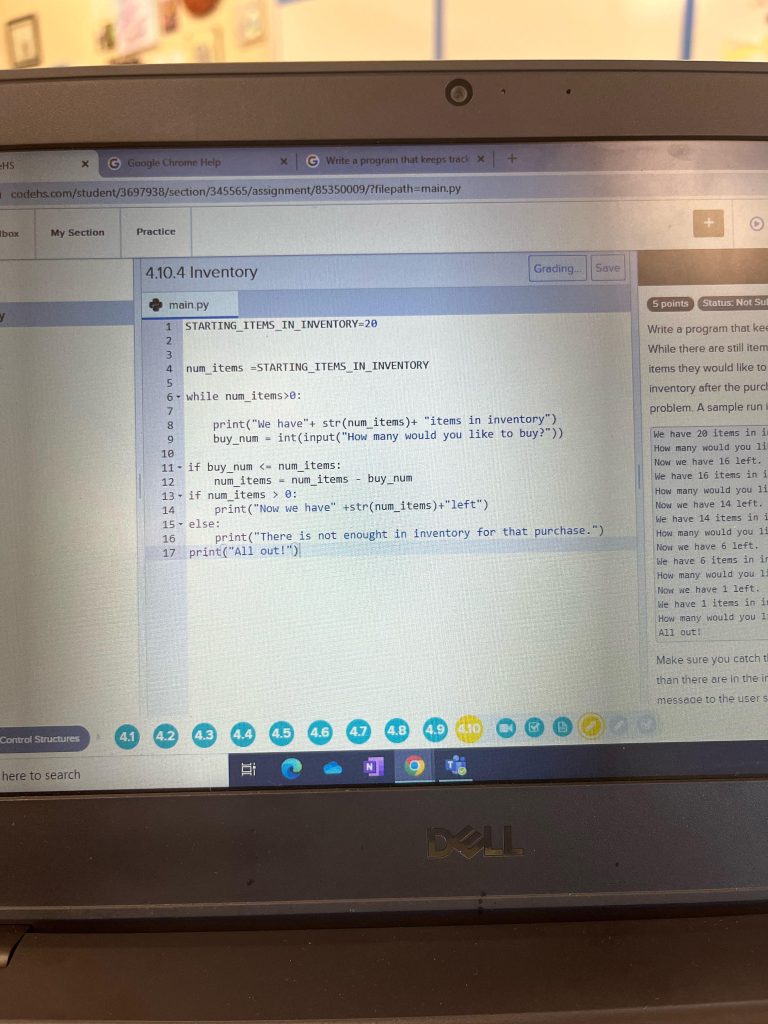Write a program that keeps track of inventory. The program starts with a predefined number of items in inventory. While there are still items available, the user can input how many items they want to buy. If there are enough items, the purchase is completed, and the inventory is updated. If not, display a message saying there isn’t enough inventory. Once the inventory reaches zero, print “All out!”.
Write a program that keeps track of inventory
Share


Here’s a simple Python program that tracks inventory:
# Define initial inventory
inventory = 100 # Predefined number of items in inventory
while inventory > 0:
print(f"Current inventory: {inventory}")
try:
# Ask user for the number of items they want to buy
items_to_buy = int(input("Enter the number of items to buy: "))
# Check if there are enough items in inventory
if items_to_buy <= inventory:
inventory -= items_to_buy # Update inventory
print(f"Purchase completed. {items_to_buy} items bought.")
else:
print("There isn't enough inventory.")
except ValueError:
print("Please enter a valid number.")
# Notify the user when inventory is empty
if inventory == 0:
print("All out!")
### Explanation:
1. Initial Inventory: The program starts with a predefined number of items (100 in this case).
2. Loop: It runs a loop while there are items in the inventory.
3. User Input: It prompts the user to enter how many items they want to buy.
4. Check Inventory: If there are enough items, it updates the inventory; otherwise, it displays a message.
5. End of Inventory: When the inventory reaches zero, it prints “All out!”.
Feel free to ask more questions or check the extended services for further help!
STARTING_ITEMS_IN_INVENTORY = 20
num_items = STARTING_ITEMS_IN_INVENTORY
while num_items > 0:
print(“We have ” + str(num_items) + ” items in inventory.”)
buy_num = int(input(“How many would you like to buy? “))
if buy_num <= num_items:
num_items -= buy_num
print(“Now we have ” + str(num_items) + ” left.”)
else:
print(“There is not enough in inventory for that purchase.”)
print(“All out!”)